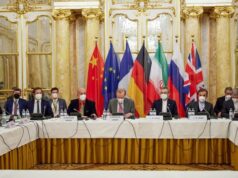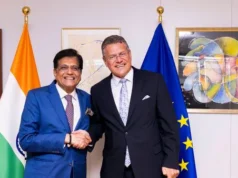Manohar Parrikar’s 27-month tenure as defence minister was enough to make him stand out as one of the most dynamic and transparent minister India has ever had.
In a short span of time, he had several achievements under his belt. He was handpicked by Prime Minister Narendra Modi in November 2014 as the defence minister for his administrative abilities and clean image. Here are the top 7 achievements of Parrikar as defence minister
1. Empathy
Instead of just writing a letter to the Family of a martyred Colonel, the RM visited the family without any fanfare. He was not even ready to release any photos to the press covering the visit.
2. ECHS
He tried his level best to improve thefundingof the ECHS. Reading the plight of those working for the ECHS, he not only ensured better re enumeration but even acted to remove the “ Bonded Labourer status “ by increasing the paid leave from 8days per year to 15 days per six months of service.
3. Defence Purchases
Parrikar’s most noticeable achievement was the Defence Procurement Policy (DPP)-2016 which was in sync with Modi’s Make in India vision, which lays the road map for how India, currently the world’s largest arms importer, will acquire equipment in future.
Parrikar worked closely with the leadership of the armed forces and the bureaucracy to put the stalled process of military modernisation back on track. The DPP was issued in April 2016 with a special emphasis on Make in India, raising of foreign direct investment (FDI) in defence to 49%, tweaking of the policy on offsets and permitting defence exports. He made fundamental changes in the way weapons and other assets are acquired in India.
Parrikar introduced the IDDM (Indigenously Designed, Developed and Manufactured) category in the DPP-2016, which means all those Indian companies, which have the capability of designing and developing their products indigenously, will get the first preference in most purchases that the defence ministry undertakes. It also made mandatory to source 40% of the content locally.
4. Modernisation of Forces
As defence minister, Parrikar approved nearly $10 billion in deals, that too without a single scam. Some of them, as basic as correct helmets for the infantry regiments, had been pending for over a decade.
The main projects that were approved during Parrikar’s tenure include a $8.7 billion deal for 36 Rafale fighter jets, a $ 3.1-billion order for 22 Boeing AH-64E Apache Longbow attack helicopters and 15 Chinook heavy-lift choppers and a $750-million deal for 145 ultra-light howitzers (M777) from the US. The defence ministry’s acquisition council also gave the green light to several key projects, including 420 air defence guns for Rs 16,900 crore, 814 artillery guns for Rs 15,750 crore and 118 Arjun Mk-II tanks for Rs 6,600 crore.
Under Parrikar’s guidance, the ministry of defence invoked the government’s emergency financial powers to sign contracts with Russian manufacturers to procure ammunition and spares worth Rs 5,800 crore for the Army and Rs 9,200 crore for the Air Force. Similar deals are being negotiated with French and Israeli companies. However, the serviceability of the war-fighting equipment still needs substantial improvement.
Parrikar broke the middlemen-arms-agents-officials nexus in the defence sector. He tried to bring more transparency and expedited the decision-making process. He had highlighted transparency, fast decision-making and ease of doing business among his successes.
5. One Rank One Pension
It was under Parrikar’s tenure that the government tried to address the long-pending one rank one pension (OROP) policy. The demand had not been accepted for the past four decades. The scheme grants equal pension to military personnel retiring in the same rank with the same length of service, regardless of the date of retirement. Nearly three million ex-servicemen and widows benefited from the scheme.
Implementing the scheme cost the government between Rs 8,000 and Rs 10,000 crore, a figure that will increase in the future. OROP for retired armed forces personnel was announced on September 5, 2015. The scheme took 2013 as the base year to calculate pensions and its date of implementation was July 1, 2014. The period for review was kept at five years.
6. Welfare Schemes
Parrikar doubled the compensation for widows and families of soldiers dying while fighting for the country in five categories.
For soldiers dying in action during border skirmishes or fighting against militants, the compensation was revised to Rs 35 lakh from the existing Rs 15 lakh.
For deaths occurring during enemy action in war or war-like engagements, in a war-torn zone in the foreign country, the compensation was increased from Rs 20 lakh to Rs 45 lakh.
7. Surgical Strike
Last but certainly not the least, during Parrikar’s tenure, the Army carried out two major surgical strikes on foreign soil — one in Myanmar and the other in Pakistan-occupied Kashmir (PoK).
In September 2016, during his tenure as the defence minister, the surgical strike across the line of control (LoC) was approved. It was launched in retaliation to the terrorist attack at Uri earlier that month that saw 19 Indian Jawans being killed. Since the surgical strike, the way India responds to Pakistan’s attacks has undergone a sea change.
Under Parrikar, the Indian forces dealt with Pakistan quite sternly whenever the neighbouring country showed any aggression. The surgical strike demonstrated India’s military resolve to the world. Parrikar was quoted as saying that the surgical strike against terror camps in PoK had injected uncertainty into the neighbour’s mind.




